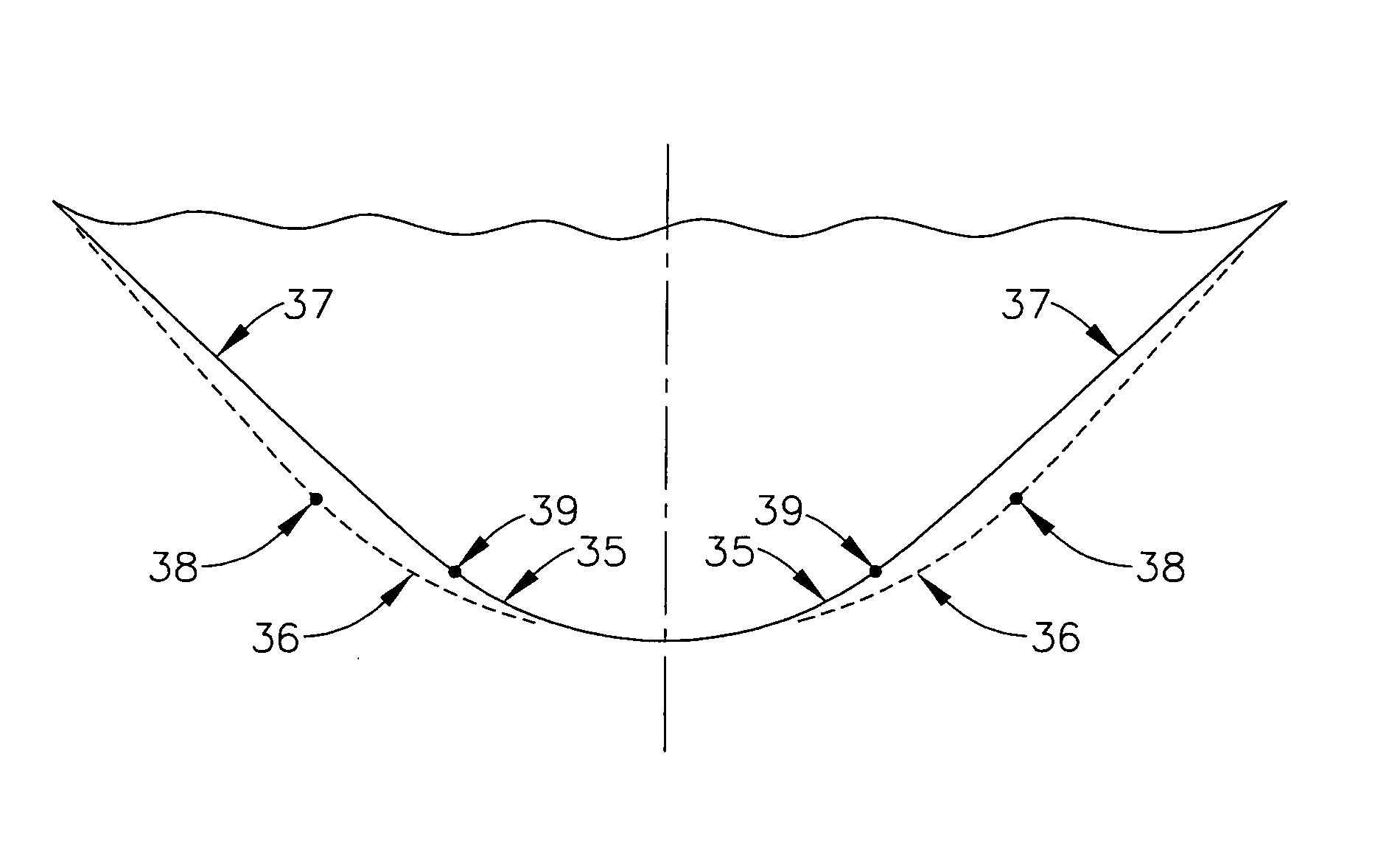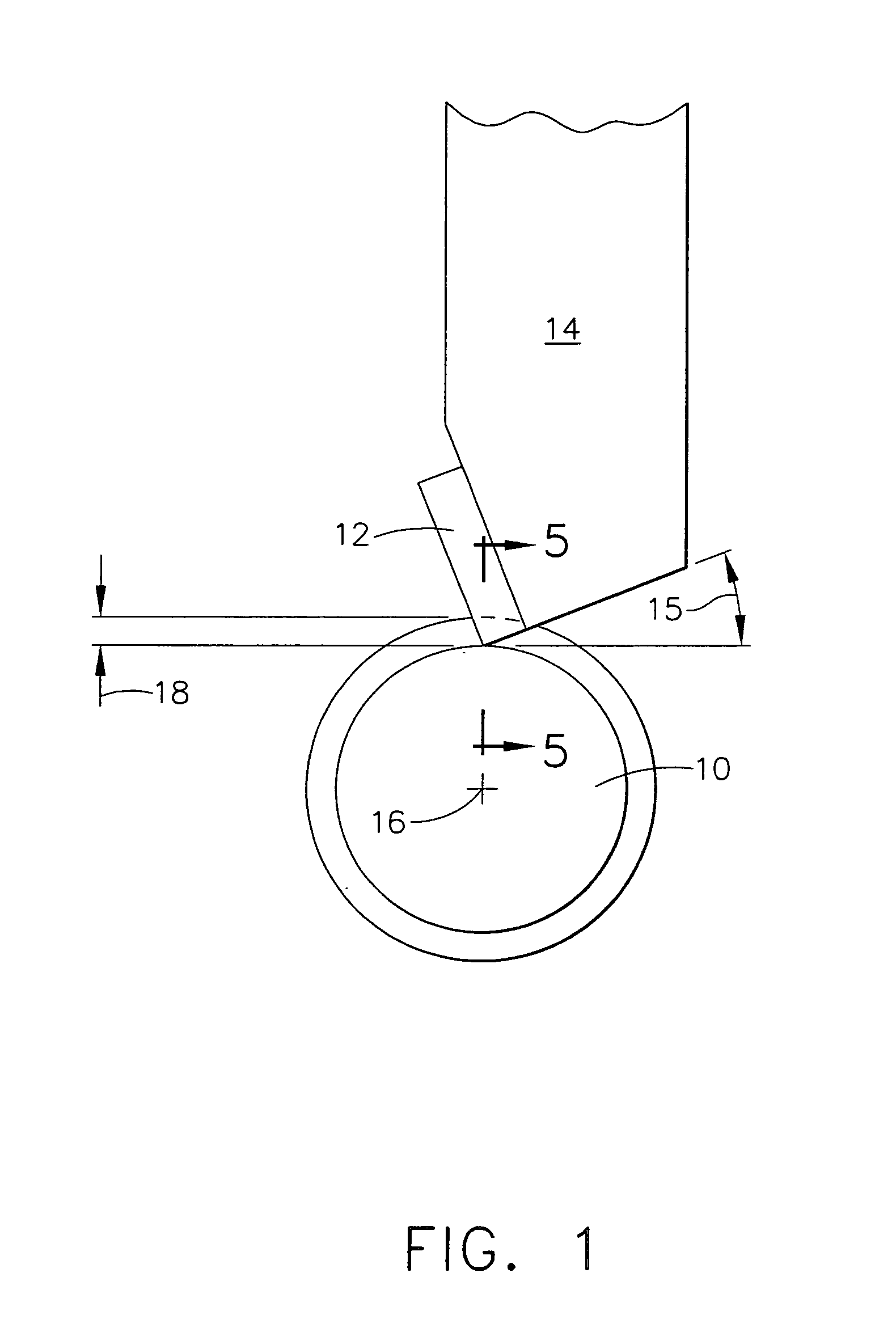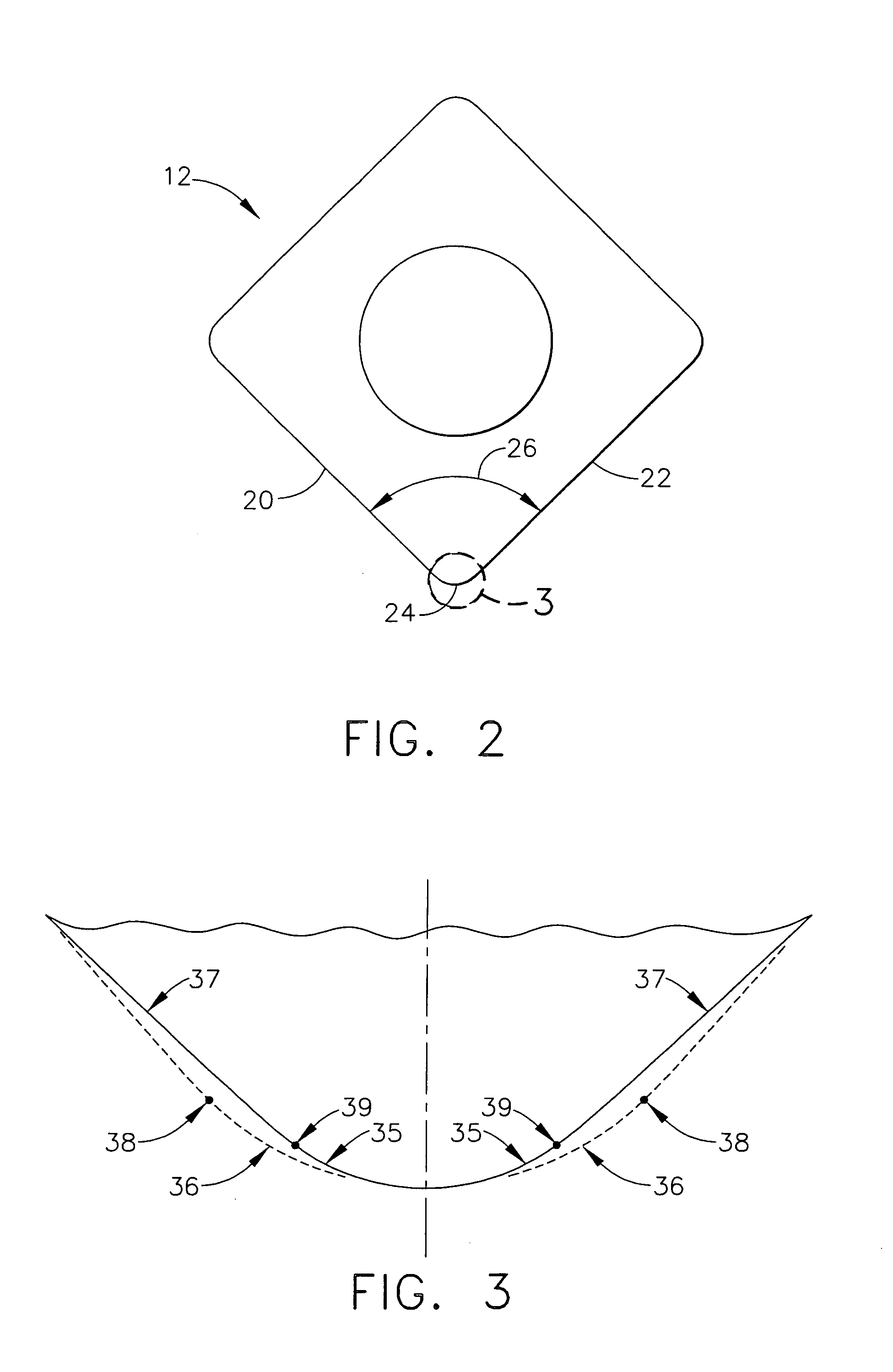Cutting tool having a wiper nose corner
a cutting tool and nose corner technology, applied in the direction of cutting inserts, manufacturing tools, instruments, etc., can solve the problems of poor tolerance, vibration and chatter, and large compressive forces
- Summary
- Abstract
- Description
- Claims
- Application Information
AI Technical Summary
Benefits of technology
Problems solved by technology
Method used
Image
Examples
Embodiment Construction
[0028]The present invention provides a turning insert incorporating a nose corner at least partially defined by a non-constant radius, piece wise polynominal basis function, such as, multi-segment spline curve as an improvement over nose corners of conventional turning inserts that are defined by curves of constant radius or numerous segments of a circle. Embodiments of the turning insert may additionally comprise two adjacent circular arc segments. Therefore, turning inserts having the wiper nose corner of the present invention may be designed to combine the advantages of a turning insert with a small nose radius and the advantages of a turning insert with a large nose radius.
[0029]FIG. 3 is an enlarged top plan view of a nose corner illustrating the difference between an embodiment of the nose corner constructed according to the present invention and the constant radius nose corner of the conventional turning insert (illustrated in FIGS. 1 and 2). The conventional turning insert h...
PUM
| Property | Measurement | Unit |
|---|---|---|
| radius | aaaaa | aaaaa |
| nose corner angle | aaaaa | aaaaa |
| radius | aaaaa | aaaaa |
Abstract
Description
Claims
Application Information
 Login to View More
Login to View More - R&D
- Intellectual Property
- Life Sciences
- Materials
- Tech Scout
- Unparalleled Data Quality
- Higher Quality Content
- 60% Fewer Hallucinations
Browse by: Latest US Patents, China's latest patents, Technical Efficacy Thesaurus, Application Domain, Technology Topic, Popular Technical Reports.
© 2025 PatSnap. All rights reserved.Legal|Privacy policy|Modern Slavery Act Transparency Statement|Sitemap|About US| Contact US: help@patsnap.com



